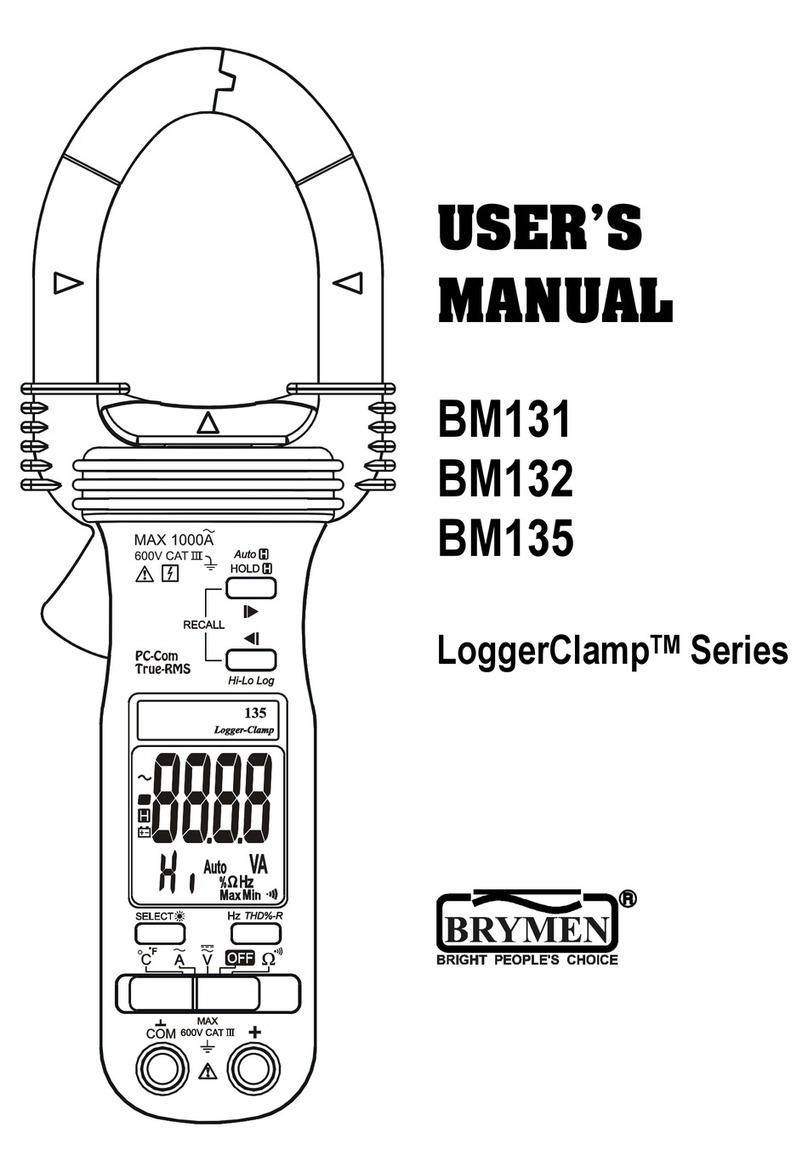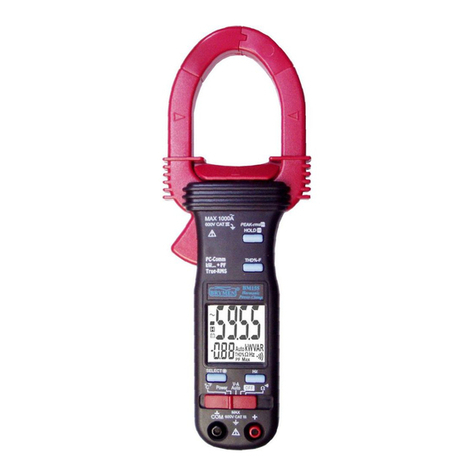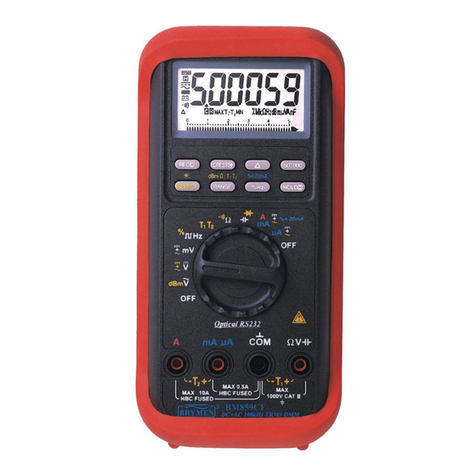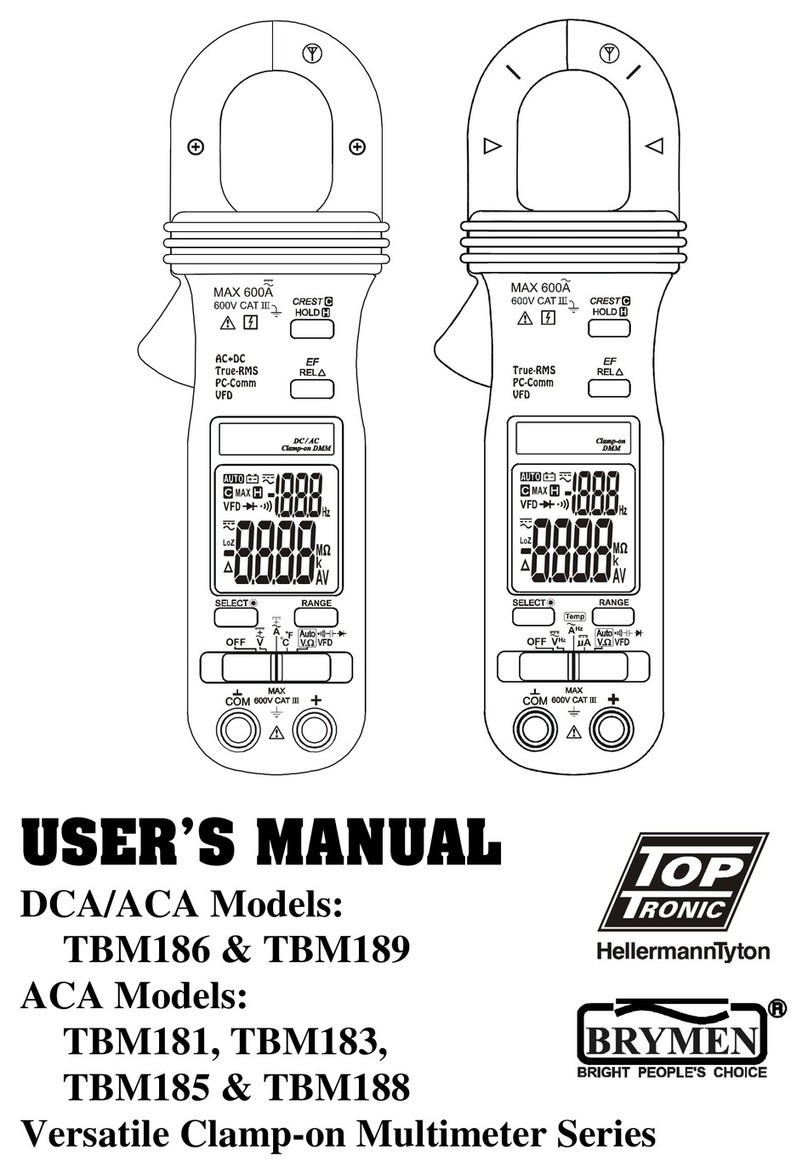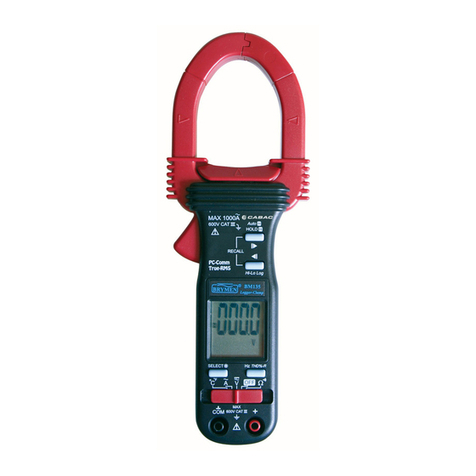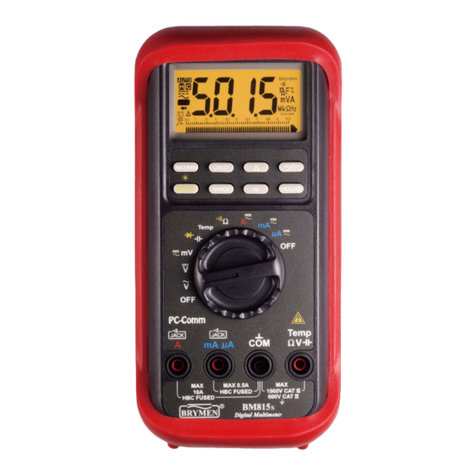4) OPERATION
Introduction
To realize swift simultaneous dual measurements, the meter uses two Analog-to-
Digital Converters (Duo) for its Clamp-on ACA functions (Upper-display readings) as
well as its Rotary-switch functions (Lower-display readings) separately. Clamp-on
ACA functions turn ON whenever the Rotary-switch function is turned ON.
Regular & AmpTipTM Clamp-on ACA functions
Defaults at Regular ACA function where best accuracy is specified at the jaw center
area. Press button momentarily to toggle to AmpTipTM ACA function where best
accuracy is specified near the jaw tip area for low-current small conductors below
10mm in diameter.
WARNING: Do not use the meter to measure currents above the rated frequency
(400Hz). Circulating currents may cause the magnetic circuits of the Jaws reach a
hazardous temperature.
CAUTION: (Application and Removal of the Clamp-on Jaws) Press the jaw trigger and
clamp the jaws around conductor(s) of only one single pole of a circuit for load current
measurements. Make sure the jaws are completely closed, or else it will introduce
measurement errors. Enclosing conductor(s) of more than one pole of a circuit may
result in differential current (like identifying leakage current) measurements. Align the
conductor(s) to the Jaws center indicators (Regular or AmpTip™indicators where
applicable) as much as possible to get the best measuring accuracy. For removal,
press the jaw trigger and remove the jaws from the conductor(s).
CAUTION: Adjacent current-carrying devices such as transformers, motors and
conductor wires may affect measurement accuracy. Keep the jaws away from them as
much as possible to minimize influence.
ACV, Line-Level Hz & EF-Detection (NCV) functions
Inputs, other than that of EF-Detection as described later on, are made via the test
lead terminals COM/+. Defaults at ACV Function. Press SELECT button momentarily
to select ACV, Hz, EF-H & EF-L functions in sequence.
WARNING: Before and after hazardous voltage measurements, test the voltage
function on a known source such as line voltage to determine proper meter functioning.












